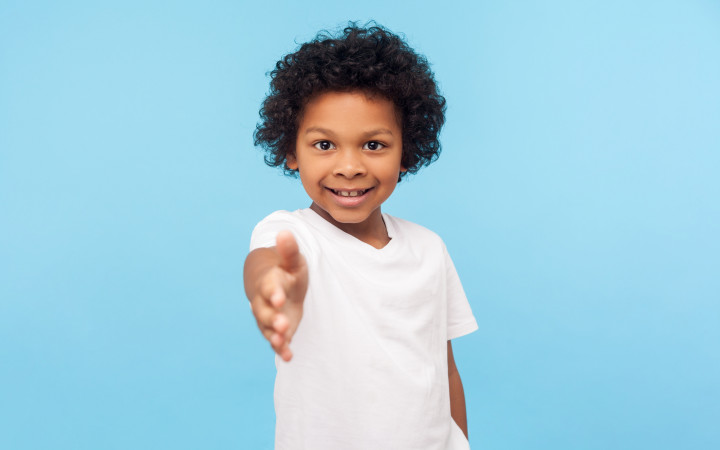Today’s Wonder of the Day was inspired by WonderTeam. WonderTeam Wonders, “Who invented the fist bump?” Thanks for WONDERing with us, WonderTeam!
After a break from school, it’s always nice to see your friends again, isn’t it? You may not be excited about jumping right back into schoolwork. But the smiling faces of your closest buddies can quickly turn a frown upside down!
How do you greet your friends when you see them? Do you walk up and extend your hand for a formal handshake? We’re going to guess . . . probably not!
Instead, you might say hello with a high five. Or maybe you wave. You might even use a greeting that involves many hand gestures in a special order. No, we’re not talking about just any old secret handshake. We’re talking about dap!
Today, giving dap takes on many forms. It can include a wide variety of gestures. Common examples include the fist bump, pound (a vertical fist bump), and hand-slap. Some people also add a forearm chest bump or the arm-wrestling grip grasp pulled into a half hug.
Examples of dapping are often seen among athletes during games. And of course, athletes have a lot of influence on popular culture. You can see similar gestures between adults of all ages in daily greetings. They’re also common among children on playgrounds and in school hallways.
Where did these unique greetings start? Historians trace giving dap back to the late 1960s. During the Vietnam War, some Black American soldiers invented dap, which stands for “dignity and pride.”
The dap became more than just a greeting. It grew into a sort of language. It helped the soldiers communicate solidarity, identity, and cultural unity. The dap meant they would look after one another.
The 1960s was a decade of continued racial unrest in the United States. Unfortunately, that didn’t disappear when soldiers were sent overseas. The dap became a symbol of strength and unity among Black soldiers. However, their fellow White soldiers and officers didn’t see it that way. They thought dapping was dangerous.
What’s dangerous about giving dap? Nothing! But officers in the military thought it helped Black soldiers secretly communicate to plan insurrection. Soldiers were punished and even forced out of the military for using the dap.
When Black soldiers returned from Vietnam, they continued to give dap. Slowly, the practice became mainstream. Today, it’s seen in many places, from the basketball court to the national political stage. Where have you seen dapping practiced?
Standards: C3.D2.His.2, CCRA.L.3, CCRA.L.6, CCRA.R.1, CCRA.R.2, CCRA.R.4, CCRA.R.10, CCRA.SL.1, CCRA.SL.2, CCRA.W.2, CCRA.W.9, CCRA.L.1, CCRA.L.2




